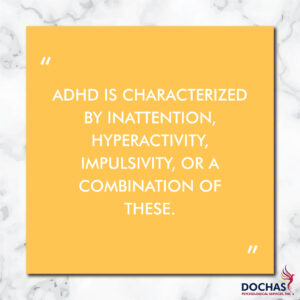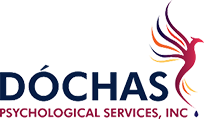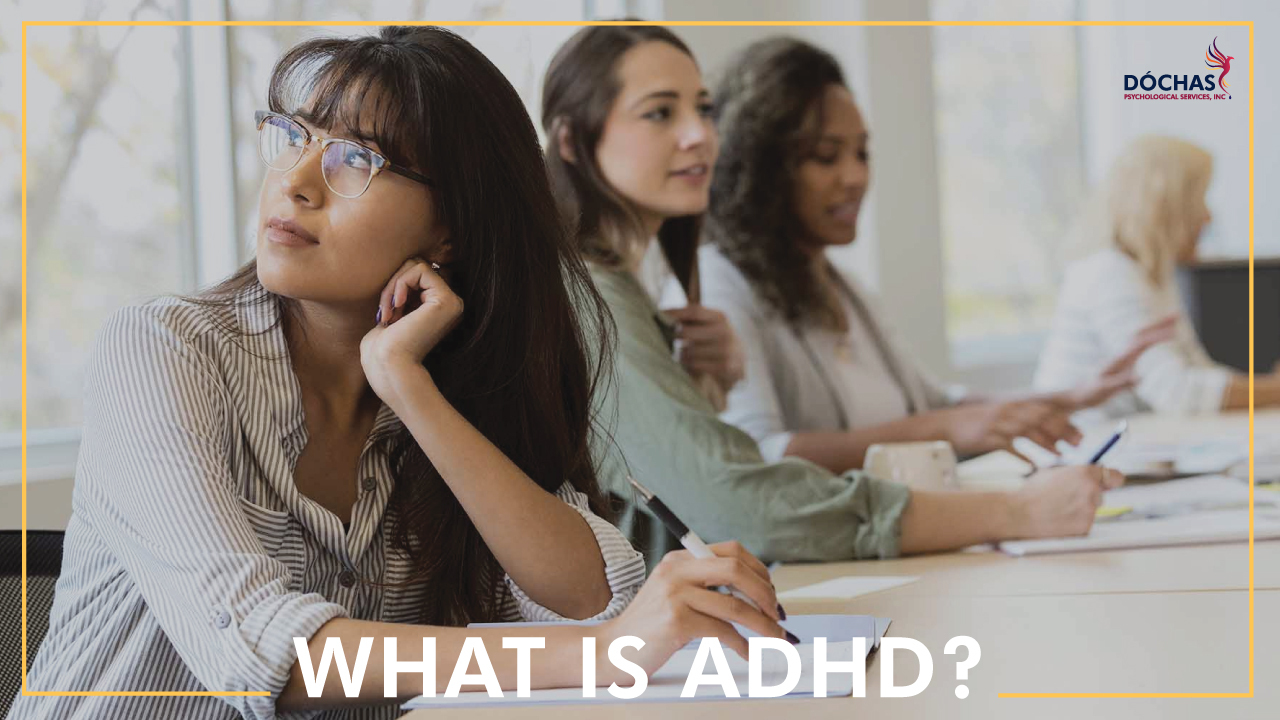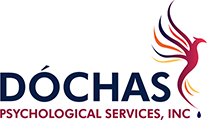Hello! It’s Rachael here on the Dóchas blog, and today I’d like to talk about ADHD. Attention Deficit Hyperactivity Disorder (ADHD) seems to be a trending topic, and as it affects approximately 5% of children and 3% of adults, I can understand why!

So what is it? Well, ADHD is a neurodevelopmental disorder characterized by inattention, hyperactivity, impulsivity, or a combination of these. This is caused by low levels of norepinephrine, a neurotransmitter, that works with dopamine in our brains to help people pay attention and focus on their daily activities.
Let’s break down what this looks like:
Inattention is displayed behaviourally by wandering off task, lacking persistence, having difficulty sustaining focus, and being disorganized. These symptoms are considered inattention when they are not caused by defiance or a lack of comprehension.
Hyperactivity is considered excessive motor activity (running around, climbing, jumping) when not appropriate, excessive fidgeting/tapping, or excessive talking. As children move towards adulthood these symptoms tend to decrease or change. In adults, hyperactivity is commonly displayed as extreme restlessness or nonstop activity (it seems like they are a machine that just doesn’t ever stop).
Impulsivity includes hasty actions that occur without forethought and have a high potential for harm to the individual. These behaviours reflect a desire for immediate reward or an inability for delayed gratification. They include social intrusiveness (interrupting others excessively, inability to wait one turn) or making important decisions without consideration of long-term consequences (quitting a job without thinking it through, accepting a job without adequate information, darting out into the street without looking).
ADHD begins in childhood and continues throughout life. Hyperactivity symptoms are the most prevalent in toddlers; however, it is difficult to determine what excessive motor behaviour in a toddler is highly different from normal behaviour. As such, ADHD is most often identified in children during school years once the inattention symptoms become more noticeable in a classroom.
The symptoms of ADHD occur in a variety of settings such as school, work, and home.
What are the effects of ADHD? ADHD can result in reduced school and academic performance, peer neglect/rejection, increased accidental injury, and, in adults, poorer occupational performance and relationship difficulties. ADHD is most often diagnosed in children through a psychoeducational assessment with consultation with a psychiatrist. While all of this can seem slightly terrifying, ADHD can be treated and managed through psychopharmacology, behaviour therapy, individual therapy, and utilizing education services.
To learn more about ADHD check out:
- Children and Adults with Attention Deficit Hyperactive Disorder (CHADD) https://chadd.org/
- Centre for ADHD awareness Canada https://caddac.ca/
Other resources on the blog about ADHD:
- ADHD and Anxiety: The Wacky Duo Shaking Up Your School Life!
- ADHD In Relationships
- What Does It Mean to Have ADHD in Adulthood?

If you’d like to talk to a professional about ADHD, reach out to us here at Dóchas Psychological Services, either at 780 446 0300 or by email at info@dochaspsych.com.
About Dóchas Psychological
Dóchas Psychological Services is a well-established and trusted therapy clinic located in Spruce Grove, Alberta. At Dóchas we value the idea that everyone deserves a safe space. Through connection and education, our team works hard to build a trustworthy relationship with each of our clients. It is our goal to create a community for our clients to feel like they belong.
Disclaimer
Information provided through Dóchas Psychological Services blogs or vlogs is meant for educational purposes only. They are NOT medical or mental health advice. You can read more about our disclaimer here.









